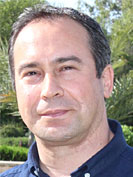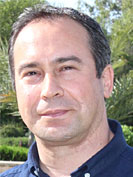Day 1 :
- Theoretical and Computational Chemistry

Chair
David López-Durán
University of Córdoba, spain
Session Introduction
David Lopez Duran
University of Córdoba, Spain
Title: Influence of the geometrical arrangement in the donor-acceptor gap of organic photovoltaics

Biography:
David López Durán is Lecturer in the Department of Physics of the University of Córdoba (UCO, Spain). He obtained the MSc degree in the Complutense University of Madrid (Spain), and his PhD in the Fundamental Physics Institute (FPI) of the Spanish National Research Council (SNRC) in Madrid.
He has developed his work in La Sapienza, University of Rome (Italy), Argonne National Laboratory, IL (USA), and CIC Nanogune, San Sebastián (Spain), among others. His research topics are: weakly bound molecular clusters, collisions of molecules at low and ultralow temperatures, and potential energy surfaces of small molecular aggregates.
Abstract:
The need to find easily renewable and environmentally friendly energy sources is nowadays a global quest and solution-processed organic solar cells have attracted attention [1]. They are formed by mixed donor and acceptor molecules, and one of the most important parameters to study is the difference between the highest occupied molecular orbital (HOMO) of the donor and the lowest unoccupied molecular orbital (LUMO) of the acceptor, which is commonly known as the HOMO-LUMO band gap, or simply, gap. In this work, the polymer 4mod-BT [2] has been considered as donor, while the 4TIC molecule [3] has been selected as acceptor. We have explored their gas-phase packing problem through an ab-initio random structure search [4], in which each single calculation has been performed within the DFT framework implemented in the SIESTA code [5].
The conclusion we arrive to is that the gap varies within 0.3 eV, which is a significant value considering that gaps in this context are not much larger than 1 eV. Moreover, the gap is not found to correlate with the binding energy of the pair (for details, see Ref. [6]).
- others
Chair
Alemzewde Ayalew
Hawassa University ,Ethiopia
Session Introduction
Alemzewde Ayalew Anteneh
Hawass University, Ethiopia
